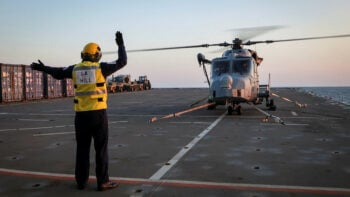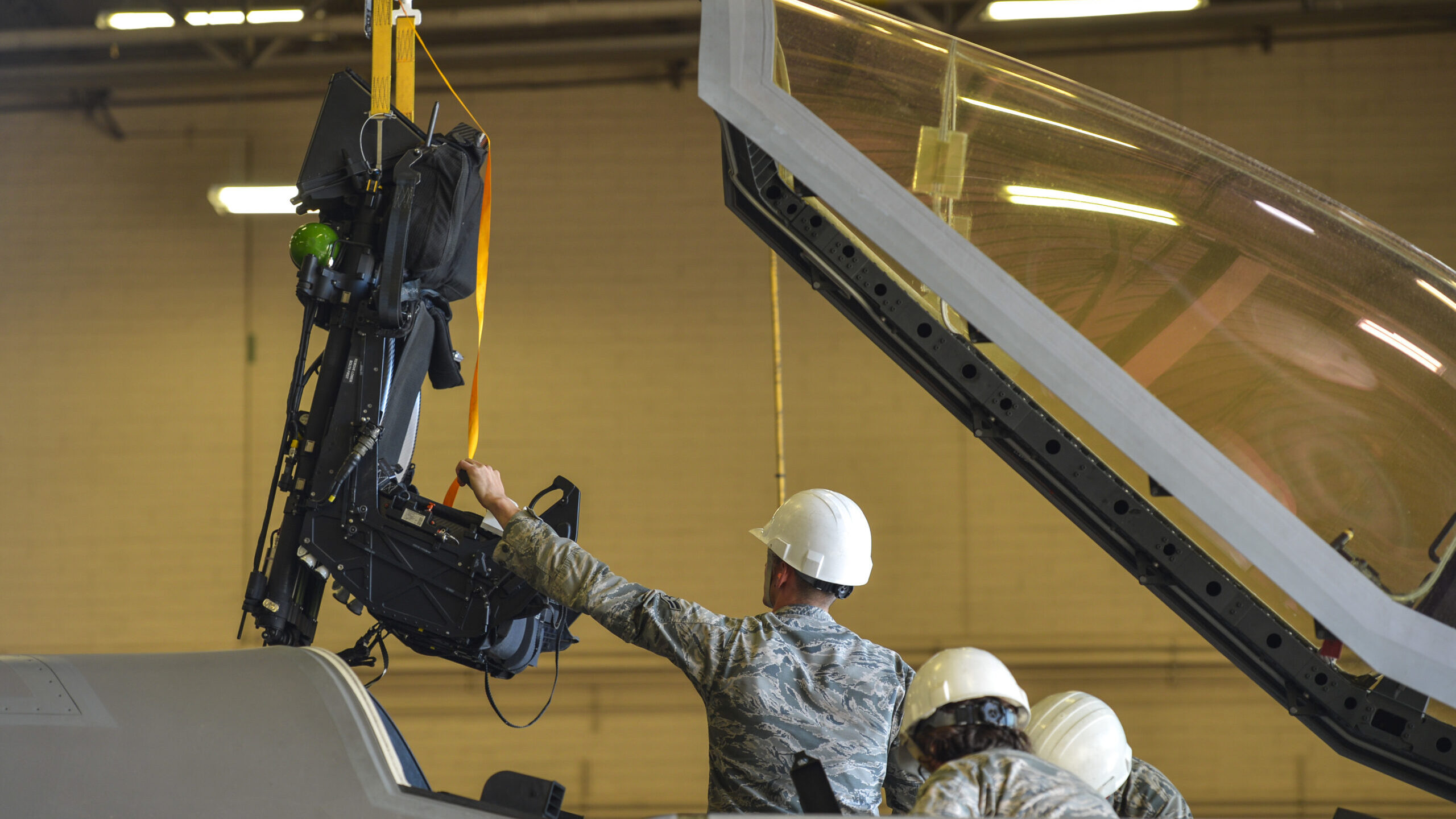
Ground crew replace an F-35A’s ejection seat in 2018. (Airman 1st Class Caleb Worpel/US Air Force)
WASHINGTON — A new report from a key government office is packed with bad news for the Pentagon’s biggest weapons program: In 14 pages and 11 colorful charts, the nonpartisan Congressional Budget Office reveals that the F-35 Joint Strike Fighter fleet not only struggles to keep up its combat readiness, but actually lost ground in 2022.
Availability rates for both the conventional take-off-and-landing F-35A and jump-jet F-35B models fell in 2022, while their flight hours per aircraft were effectively flat. Only the relatively small carrier-based F-35C fleet went up in either metric.
“Between 2021 and 2022, F-35As’ availability fell by 11 percentage points,” from 65 percent to 54, CBO says. “F-35Bs’ availability also fell, by 7 percentage points” — from 61 percent to 54 — “and F-35Cs’ availability rose by 5 percentage points [from 53 percent] to 58 percent.”
There are plenty of caveats in the CBO report. The data may be skewed because the Joint Strike Fighter fleet is relatively young and still suffering teething troubles: Of 532 jets in US service as of September 2022, the point where the reporting stops, more than 90 percent are under a decade old, and more than half have been in service less than four years. The majority of jets are also F-35As used by the Air Force, so sample sizes are small for the Marine Corps’ F-35B and Navy’s F-35C. And, CBO underlines, the F-35 is a stealth aircraft, which means sensitive coatings and precisely fitted components that historically have made headaches for maintainers.
But even compared to America’s only other stealth fighter, the F-22 Raptor of balloon-killing fame, the F-35 is struggling. When CBO looked at historical “availability rates” — the percentage of aircraft hours spent in operational squadrons and capable of at least one kind of mission, as opposed to in maintenance — brand-new F-35As do slightly better than brand-new F-22 did back when the Raptors were delivered from 2005-2012. Then then F-35A readiness dips rapidly, from roughly 70 percent in the average fighter’s first year of service to roughly 40 percent at the age of five. That’s a rate worse than even 12-year-old F-22s or 28-year-old F-15Es.
Both the F-35A and the F-22 also fly far fewer hours per aircraft per month than the non-stealthy F-15E, in the teens as opposed to twenties.
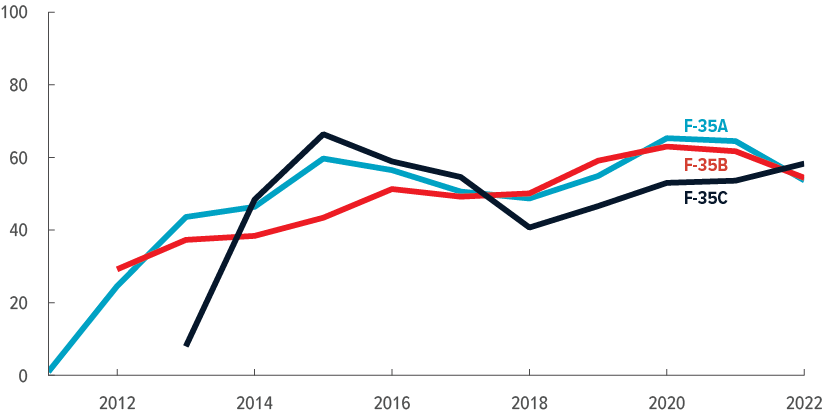
F-35 availability rates by variant. SOURCE: Congressional Budget Office
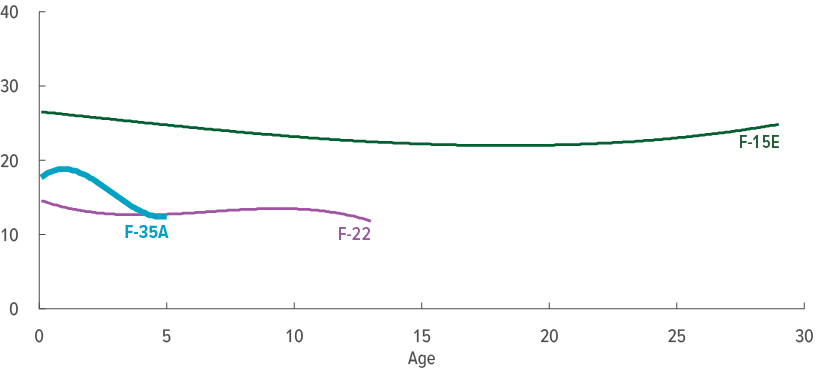
Availability rates by years in service for F-35As, F-22s, and F-15Es. SOURCE: Congressional Budget Office
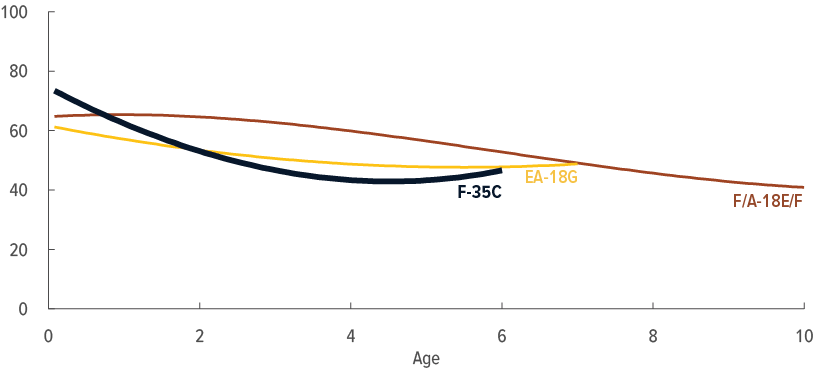
F-35C availability rates versus E/A-18G Growlers and F/A-18E/F Super Hornets. SOURCE: Congressional Budget Office
The Navy F-35C fleet does better compared to the Navy’s non-stealthy Super Hornet, with availability rates of a six-year old F-35C comparable to a seven-year-old F/A-18E/F. (The Super Hornet, in turn, is doing worse than earlier Hornet models). But, as in the Air Force, the stealth jets manage far fewer flying hours per month than the non-stealthy types.
TAI exec claims 20 Turkish KAAN fighters to be delivered in 2028
Temel Kotil, TAI’s general manager, claimed that the domestically-produced Turkish jet will outperform the F-35 Joint Strike Fighter.




















